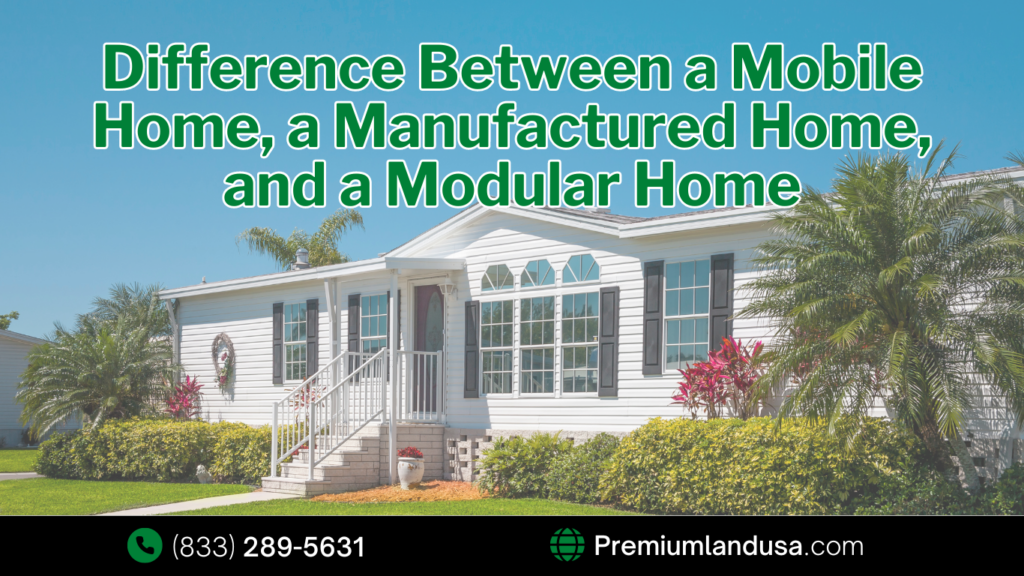The terms “mobile home,” “manufactured home,” and “modular home” are often used interchangeably, but they refer to different types of prefabricated housing with distinct definitions. All three fall under the umbrella of “prefabricated” or “prefab” homes, meaning they are built in a factory before being transported to a site for assembly. However, each has its own characteristics, regulations, and construction standards.
Mobile Homes
A mobile home refers to prefabricated homes built before June 15, 1976. These homes were constructed with fewer safety and construction standards, making them more prone to structural and safety issues. The term “mobile” reflects the fact that these homes were designed to be easily moved, often using trailer hitches. Today, most of these homes are permanently placed, and while still livable, they lack the modern regulatory protections of more recent housing (U.S. Department of Housing and Urban Development, HUD).
Manufactured Homes
A manufactured home refers to homes built after June 15, 1976, and regulated by the HUD Code, which introduced stringent federal construction standards. These homes must meet specific guidelines for durability, energy efficiency, fire safety, and overall quality. Manufactured homes are typically transported to a site in sections and assembled, but they can still be relocated if necessary. They are often installed on permanent foundations and offer a more modern and regulated housing option compared to older mobile homes (HUD).
Key Features of Manufactured Homes:
– Regulations: Built to HUD standards, ensuring durability and safety (The Balance).
– Foundation: Typically placed on permanent foundations, designed for long-term living.
Modular Homes
A modular home is another type of prefabricated home, but unlike mobile and manufactured homes, modular homes are built in sections in a factory and then assembled on-site on a permanent foundation. Modular homes must comply with local and state building codes, just like traditional site-built homes, rather than the federal HUD code. These homes are often indistinguishable from traditional homes once completed, and they tend to appreciate in value similarly to site-built houses (Clayton Homes).
Key Features of Modular Homes:
Building Codes: Must meet local and state building regulations, rather than federal HUD standards (Geico).
Permanent Foundation: Assembled on-site and placed on a permanent foundation, just like a traditional home.
Appreciation: Generally appreciates in value like site-built homes (Clayton Homes).
Key Differences
1. Construction Standards: Mobile homes (pre-1976) have fewer safety regulations, manufactured homes are regulated by the federal HUD code, and modular homes must meet local and state building codes.
2. Terminology: “Mobile home” applies to homes built before 1976, while “manufactured home” refers to HUD-regulated homes built after this date. Modular homes are governed by local building codes.
3. Foundation: Manufactured and modular homes are typically placed on permanent foundations, while mobile homes often have temporary foundations.
Final Thoughts
While all three types of homes—mobile, manufactured, and modular—fall under the prefab housing category, understanding the differences is crucial, especially when it comes to legal regulations, resale value, and construction standards. Manufactured homes provide a modern and regulated option compared to older mobile homes, while modular homes offer the benefits of traditional site-built homes with the efficiency of factory construction.
References
U.S. Department of Housing and Urban Development (HUD), “Manufactured Homes and Standards.”
The Balance, “Mobile vs. Manufactured Homes: What’s the Difference?”
Investopedia, “Mobile Home vs. Manufactured Home.”
Clayton Homes, “Mobile, Manufactured, and Modular Homes Defined.”
Geico, “Understanding Mobile, Manufactured, and Modular Homes.”

